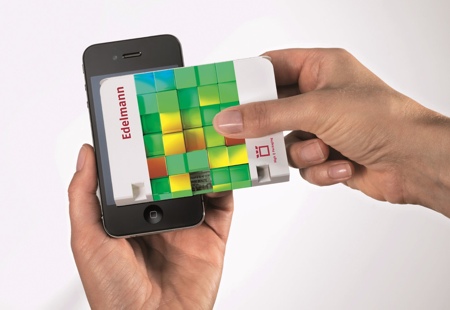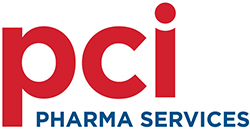The world pharmaceutical packaging market will be worth US$78.79bn by 2018, according to MarketsandMarkets.1 Dominated by North America, Europe and Japan, which accounted for more than 70% of the overall market in 2012, the sector is seeing growing demand from the Asia Pacific region. This is due to increased wealth, ageing populations and the growth of pharmaceutical contract manufacturing in the region.
Across the globe, the sector faces major changes, partly driven by changing lifestyles, with increasing use of smart phones and the Internet, but more so by legislation. Packaging concepts driven by smart phone technology are being developed to assist in patient convenience and compliance as well as authenticity.
As the technology develops, future packaging will be used more interactively by product providers and consumers. One typical such development is the Touchcode concept by packaging developer Edelmann. Invisibly applied in a printed image, this element transforms folding cartons, vial cards and leaflets into interactive media. Through the touch of a smartphone or tablet, the Touchcode brings digital content directly onto the display. Contact-free data transmission using near-field communication is possible using a label integrated into the folding carton. The use of digital interactive technology could allow companies to increase customer dialogue and to collect data.
But by far the biggest influence on packaging comes from legislation such as the European Falsified Medicines Directive (Directive 2011/62/EU) and the US track and trace law signed by President Obama in 2013, as well as the implementation of EU pharmacovigilance legislation related to labelling; these require a major rethink of packaging operations. Driven by the growing global drug counterfeit market, the development of anti-counterfeiting technologies and demand for the generation of secure codes – Global Trade Item Numbers (GTIN) – that can uniquely identify products, are top priorities.
Some countries, such as China and France, already have some track and trace requirements, and the rest of the EU, the US, South Korea and Brazil will have in the next few years. Pharma firms and service providers are in various states of readiness to meet these obligations. Some have piloted and commercialised select packaging lines outfitted with serialisation, others are only just having initial dialogue.
At the last count there were more than 35 different sets of regulations for differing markets being proposed or implemented
‘This broad spectrum of readiness is not surprising given the fragmented and sometimes conflicting patchwork of track and trace regulation around the globe,’ says contract services provider Packaging Coordinators, Inc (PCI). ‘At the last count there were more than 35 different sets of regulations for differing markets being proposed or implemented.’ The company says the situation has been made more difficult by the inability of the US and Europe to set a global standard, which left developing countries to generate localised regulations.
‘As we engage clients on their serialisation plans, we stress the need to consider the total time to plan and implement their serialisation strategies. We advise clients that the time to enable the equipment and infrastructure for contracted services is approximately 7–9 months from when major decisions have been finalised,’ says PCI.
Key considerations
There are several key considerations that companies need to address: ‘The far majority of the clients we have discussed serialisation with have opted for only using the barcode/human readable approach versus supplementing with RFID, although we have experience of both paths.’ PCI adds that meeting the requirements for the presence of both 2D barcodes and human readable alpha/numeric codes requires a not insignificant amount of space on the pack. It can be particularly invasive on small packs, such as injectable vials and cartons.
Any simple artwork change can be very resource intensive. ‘The cumulative effect of changes to each component involved in serialisation, particularly when aggregation to the secondary and tertiary packaging is a requirement, can add up to a substantial impact on one’s supply chain and internal/external resources,’ the company adds.
Companies need to budget enough time and resource to be successful
Additionally, the positioning of each child component in its container is important to ensure 100% assurance of aggregation; this can also lead to packing process changes. ‘Companies need to budget enough time and resource to be successful. Many companies do not fully appreciate this element of the overall impact of track and trace legislation,’ PCI says.
Aesica is one CDMO that has introduced serialisation services and initiated commercial production of two anti-allergy product lines for the Chinese market at its Pianezza site in Italy, for a multinational client. The packaging lines and associated serialisation services are for the dedicated supply for one of Aesica’s strategic partners. The implementation took less than six months to complete, with the first production of serialisation batches just commenced. Meanwhile another CDMO, Vetter, is implementing its IT solution and will offer serialisation services such as printing GTIN on packages by the end of 2014.
Printing codes is only the start of the FMD Directive requirements
But printing codes is only the start of the FMD Directive requirements. Diane Palmquist, VP, Manufacturing Industry Solutions at GT Nexus says: ‘It is highly likely that traditional supply chain management resources relied upon by pharma companies will fall short in meeting information needs such as types and sources of ingredients, transportation dates, routes of ingredients, movement of final products to wholesalers and retailers.’
To meet these obligations, adds Palmquist, they will need accurate information across the entire supply chain at any point, at any location, instant access to real-time updates and alerts if issues are detected, visibility of all handovers in the supply chain, traceability back to the source of all materials, and seamless collaboration between all parties. Faced with the potentially huge cost of addressing these needs through infrastructure, Palmquist believes smaller companies may not survive unless they take an innovative, new approach to supply chain management. Cloud-based platforms, in her view, provide the visibility and traceability to meet these challenges.

Edelmann’s Touchcode, an element that is invisibly applied in a printed image, transforms folding cartons, vial cards and leaflets into interactive media
TraceLink says it has an ‘end-to-end integrated pharmaceutical serialisation and government reporting solution’ based on the Life Sciences Cloud network platform already in commercial use by multiple top pharmaceutical companies for compliance in China. The country’s new track and trace laws mandate serialisation, event tracking from production to distribution and compliance reporting to the China CFDA for all pharmaceuticals by 31 December, 2015.
Initial phases of these laws are already in force. Shabbir Dahod, CEO of TraceLink says: ‘Our China compliance solution delivers on our vision to take complicated, uncertain regulatory burdens like these off the shoulders of our customers.’
Solutions are also being adopted from other industry sectors. HP (Hewlett-Packard) Inkjet and Printing Solutions deployed its own Global Product Authentication Service (HP GPAS) in 2012 that now protects 250 million HP Ink cartridges and toners annually worldwide and 90m HP memory cards in 2014.
The company is now offering a similar service to pharmaceutical companies to enable tracking and management of finished products throughout the supply chain. The 2D barcode at product/carton or pallet level is scanned at each node either into GPAS ‘track/trace aaS’ via the Internet browser or captured in GPAS via a dedicated web service feed between node and GPAS. Consumers can authenticate products using smart phone and 3G network or using SMS technology. There is also an option of incorporating anticounterfeit deterrents into label/packaging.
Reference
1. http://www.marketsandmarkets.com/Market-Reports/pharmaceutical-packaging-market-890.html

